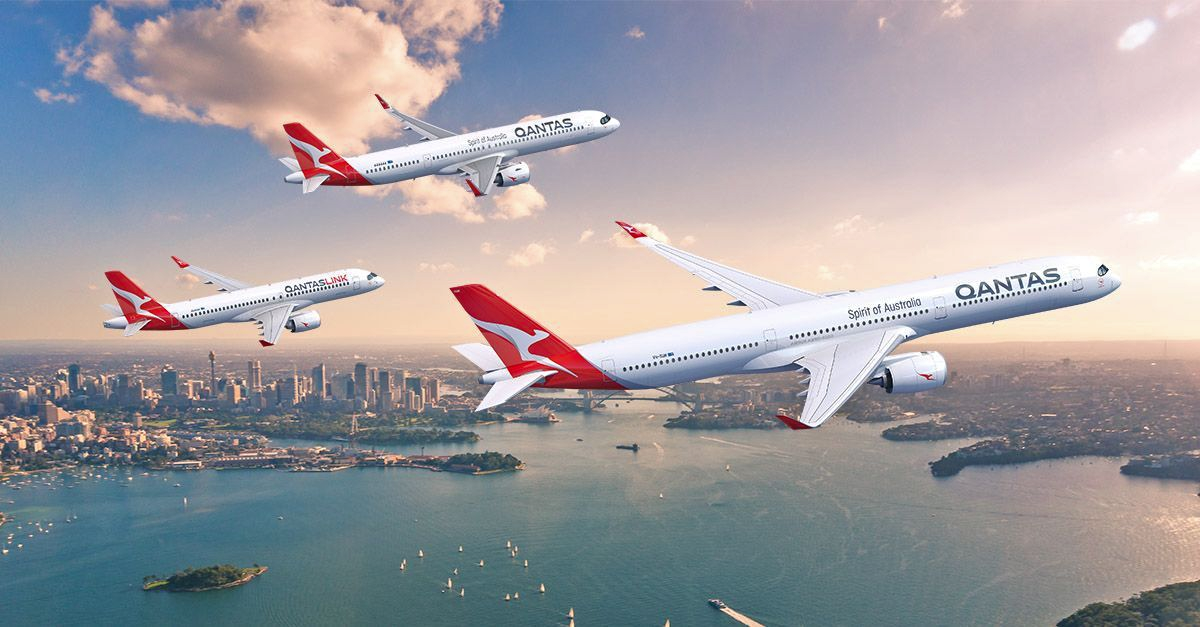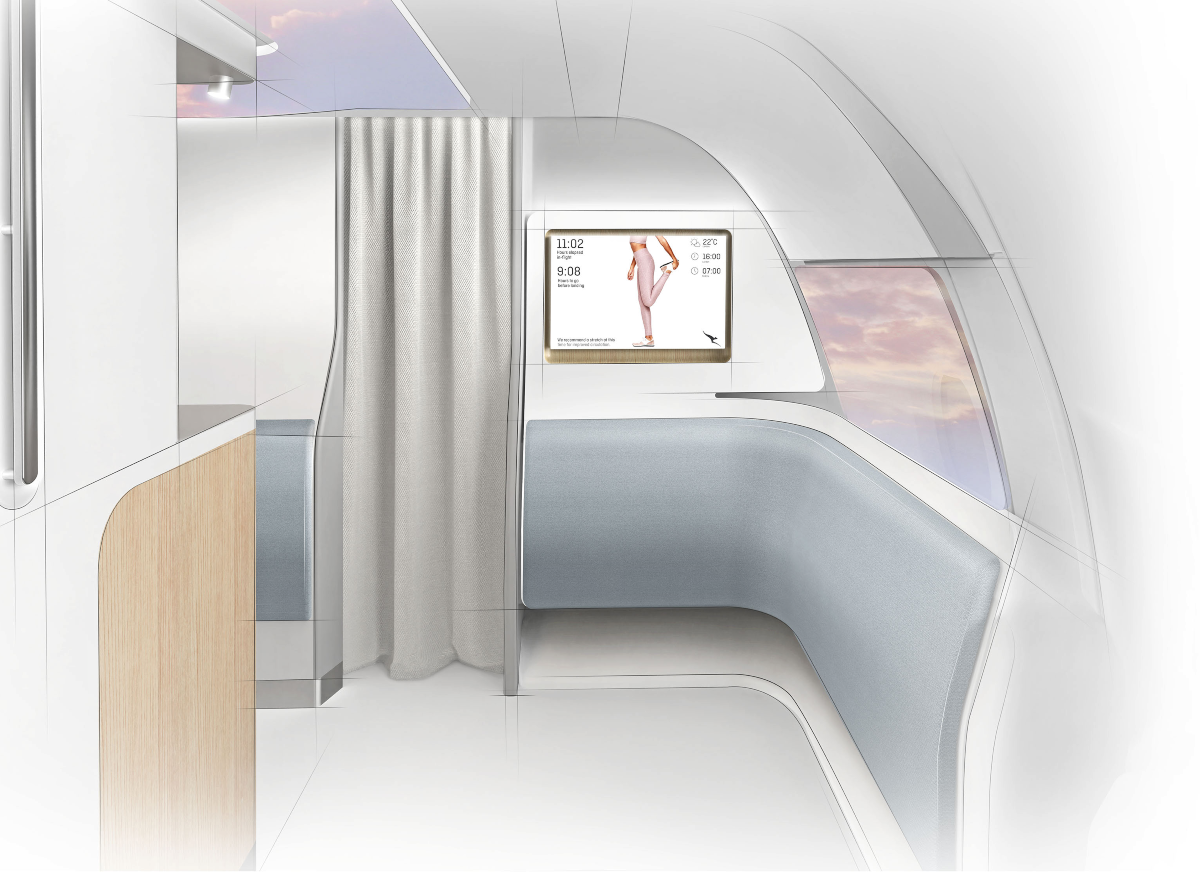After multiple diversions and delays, Qantas' ambitious Project Sunrise got the official green light on Monday morning (Sydney time). Qantas CEO Alan Joyce made the announcement in Sydney alongside a prototype Project Sunrise plane, an A350-1000 featuring Qantas livery specially flown in from Toulouse for the occasion.From 2025, a fleet of 12 Airbus A350-1000s will fly nonstop from Australia's east coast to London and New York. In addition, Qantas confirmed an order for 40 new Airbus A321XLRs and A220s to fly domestic and short to medium-haul international routes, replacing existing aircraft, with the first due to land in 2023. Qantas has also secured options for a further 94 narrowbody Airbus jets spread over the next decade.“We have come through the other side of the pandemic a structurally different company. Our domestic market share is higher, and the demand for direct international flights is even stronger than it was before COVID. The business case for Project Sunrise has an internal rate of return in the mid-teens," said Mr Joyce in Sydney on Monday.
“The Board’s decision to approve what is the largest aircraft order in Australian aviation is a clear vote of confidence in the future of the Qantas Group. Our strategy for these aircraft will see us generate significant benefits for those who make it possible – our people, our customers, and our shareholders."
Pandemic throws Project Sunrise into disarray
The bold plan to link Australia's east coast cities to destinations on the other side of the world in a single hop was set to launch just before the pandemic derailed plans. Qantas had picked modified A350-1000s as its preferred aircraft and was just weeks away from confirming the aircraft order when COVID-19 turned everything upside down.
Qantas never gave up on Project Sunrise. Every six months or so throughout the pandemic, CEO Alan Joyce would bob up to remind everyone that nonstop flights to places like New York, Capetown, and London were still on the agenda. Indeed, Mr Joyce argued as the airline industry recovered from the pandemic, passengers would prefer to bypass transit ports, making the Project Sunrise business case even more compelling. But in the meantime, it was all a question of timing.
Keen plane spotters knew an aviation news story was brewing when an A350-1000 (registration F-WMIL), partly decked out in Qantas colors, took off from Toulouse (TLS) on April 30 and flew down to Perth (PER), landing there on Sunday evening. In the early hours of Monday morning, the jet departed Perth for the trip across to Sydney, where it landed around 60 minutes ahead of the big announcement. Interestingly, the jet didn't make the TLS - SYD flight in one hop, per Project Sunrise's top-selling point.
Project Sunrise locked in
In a hangar at Sydney Airport on Monday morning, Mr Joyce confirmed he'd signed on the dotted line with Airbus to take the 12 Project Sunrise Airbus A350-1000 aircraft. Passengers embarking on the epic trips are in for a treat, with six fully enclosed first class suites featuring a separate bed and seats, lie-flat business class seats with sliding doors, and upgraded premium economy and economy class seats.
Although the A350-1000 is a sizable plane, Qantas' A350s will only carry 238 passengers, with more than 40% of the cabin dedicated to premium seating. This compares to more than 300 seats on competitor airlines. Each Project Sunrise aircraft will include a "wellness zone" where passengers can stretch their legs and get the blood flowing again. Joyce said,
"The A350 and Project Sunrise will make any city just one flight away from Australia. It’s the last frontier and the final fix for the tyranny of distance. As you’d expect, the cabin is being specially designed for maximum comfort in all classes for long-haul flying."
An Airbus focus for the future Qantas narrowbody fleets
While Qantas' order for the Airbus narrowbodies might not capture the headlines like the Project Sunrise jets, the new Airbus narrowbody order will have a greater impact on the airline's day-to-day operations. On Monday morning, Mr Joyce also confirmed firm orders for 20 Airbus A321XLR and 20 Airbus A220-300 aircraft to start replacing Qantas’ narrowbody Boeing 737 and 717 fleet.
The first A220s are due to land in late 2023 and the first A321XLRs are slated to start landing in late 2024. The 94 options are spread across A320 and A220 families, with significant delivery timing and aircraft type flexibility. Joyce commented,
"The A320s and A220s will become the backbone of our domestic fleet for the next 20 years, helping to keep this country moving. Their range and economics will make new direct routes possible, including serving regional cities better."
“These newer aircraft and engines will reduce emissions by at least 15% if running on fossil fuels and significantly better when run on sustainable aviation fuel. This order brings us closer to our commitment to reach net-zero emissions by 2050. Project Sunrise will be carbon-neutral from day one."
A big upgrade for future Qantas passengers
The Qantas’ A321XLR will be five meters longer than the outgoing 737s. The new jets will seat 200 people (20 in business class and 180 in economy class) – a 15% increase with no reduction in space between seats. The A321XLR can fly approximately 3,000 kilometers further than the 737-800s and opens up a wider range of direct domestic and short-haul international routes.
The incoming A220-300s are larger overall than the outgoing 717-200s and will be configured to seat 137 people (10 in business class and 127 in economy class) – a 25% increase with no reduction in space between seats. It has almost twice the range at over 6,000 kilometers, meaning it can fly between any city in Australia.
Most regular Qantas flyers will agree these new planes represent a significant upgrade. The Airbus order also locks in the Qantas drift away from Boeing in favor of the Toulouse plane builder. Airbus fans will appreciate that drift, Boeing fans maybe less so. But these incoming jets do represent a significant step-up in Qantas' future capabilities and combined with the Project Sunrise flights, sees Qantas chart its course over the medium-term future.


.png)
